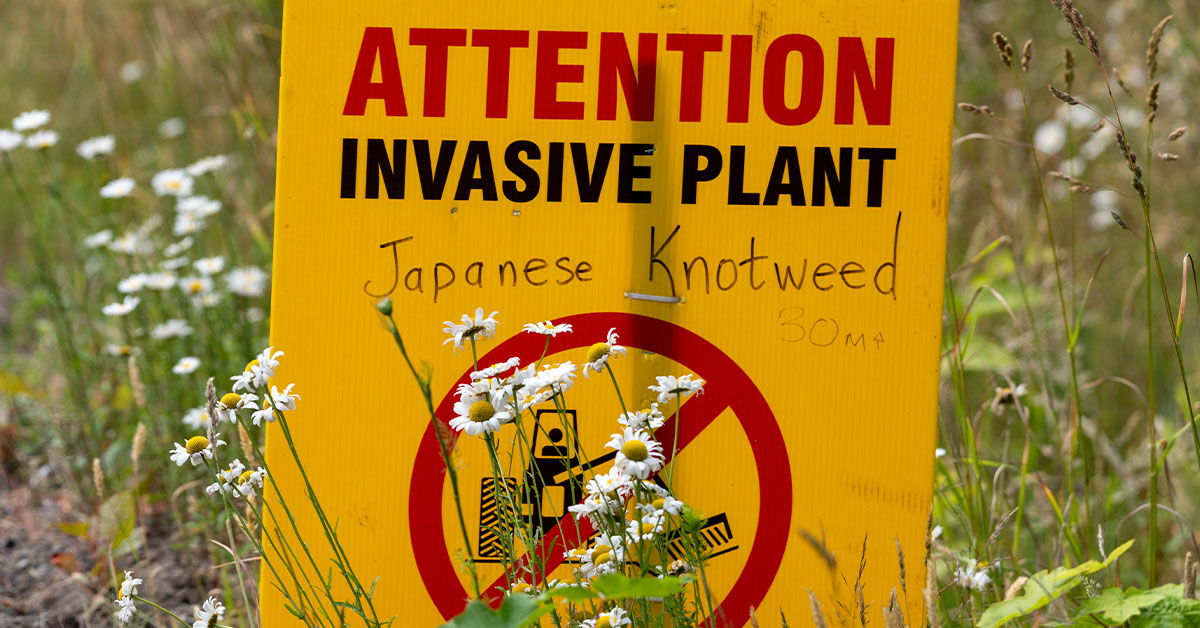In the verdant realms of our backyards and gardens, there’s a silent battle taking place. It’s a clash not of swords, but of roots and leaves, a war waged by invasive plants against native flora. These seemingly innocent invaders, often chosen for their aesthetic appeal or hardy nature, can swiftly overrun landscapes, crowding out native species and disrupting delicate ecological balances.
This article will shine a light on some of the most common culprits, those invasive plants that, despite their charming facade, should never find a home in your garden.
Don’t plant these 10 common invasive plants
There are many plants that are popular for their aesthetic appeal or rapid growth can, unfortunately, become invasive, outcompeting native species and disrupting local ecosystems. Here’s a list of some such plants to avoid:
- English Ivy (Hedera helix): While often used as a ground cover, this vine can choke out other plants and even damage buildings and trees.
- Yellow Iris (Iris pseudacorus): This plant, also known as yellow flag iris, can spread rapidly in wetland areas and crowd out native species.
- Butterfly Bush (Buddleja davidii): Although it’s loved by many for attracting butterflies, this plant can easily spread and become invasive.
- Japanese Barberry (Berberis thunbergii): A popular landscaping plant due to its vibrant color and ability to grow in various conditions, it can create dense thickets that crowd out native plants.
- Periwinkle (Vinca minor): This ground cover spreads quickly and can smother native understory vegetation.
- Mimosa (Albizia julibrissin): Despite its beautiful and fragrant flowers, it spreads aggressively and can outcompete native plants for resources.
- Purple Loosestrife (Lythrum salicaria): Its tall, purple flowers may be attractive, but it can take over wetland habitats and decrease biodiversity.
- Bamboo (various species, especially Phyllostachys): It grows rapidly and can take over a yard or natural area, making it very difficult to remove.
- Norway Maple (Acer platanoides): While a popular shade tree, it can outcompete native trees and plant species.
- Water Hyacinth (Eichhornia crassipes): In water gardens, these plants can quickly become a problem, as they multiply rapidly and can choke out other aquatic plants.
It’s always best to check with a local extension service or native plant society before introducing a new plant to your landscape. They can recommend beautiful native alternatives that will provide food and habitat for local wildlife without the risk of becoming invasive.
Why plant only native species?
Planting native species in your garden is like rolling out a welcome mat for local wildlife, including our precious pollinators. These plants have grown up, so to speak, in your region, meaning they’re perfectly suited to the local climate, soil, and wildlife.
Here are a few reasons why sticking to native species is so important:
- Support Local Ecosystems: Native plants provide the right kind of food and shelter for local wildlife. Non-native plants, on the other hand, may not offer the same benefits, and can sometimes even be harmful to local species.
- Benefit Pollinators: Many of our native pollinators have co-evolved with native plants and depend on them for survival. Some pollinators can only feed on or lay their eggs on specific native plants.
- Save Water: Because native plants are adapted to your local climate, they generally require less water than non-native species once established. This makes them a more sustainable choice.
- Reduce Maintenance: Native plants are adapted to deal with local pests and diseases, meaning they typically require less maintenance and fewer pesticides.
- Preserve Biodiversity: By planting native species, you’re helping to maintain the genetic diversity of your local area. This is important for the overall health and resilience of the ecosystem.
- Combat Invasive Species: Non-native plants can sometimes become invasive, crowding out native species and disrupting local ecosystems. By planting natives, you’re helping to protect your local environment.
So, while that exotic plant from another continent might look nice in your garden, it’s worth considering what you’re giving up in exchange. Planting natives is an easy way to help protect your local environment, and honestly, there’s a certain satisfaction that comes from knowing your garden is a little piece of the natural, local landscape.













